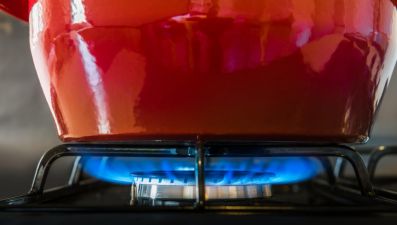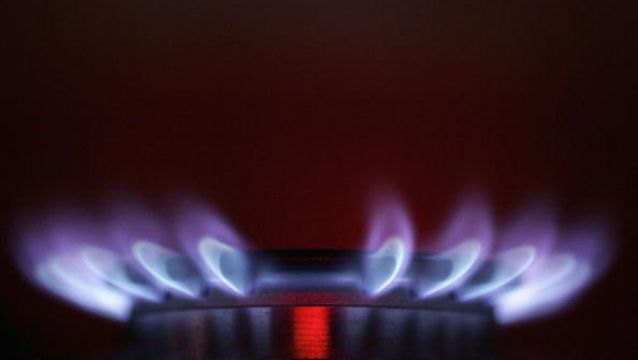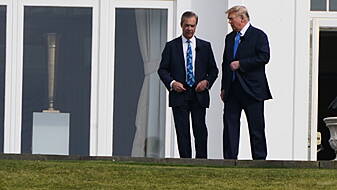Households across Europe face much higher winter energy bills due to a global surge in wholesale power and gas prices and consumer groups have warned the most vulnerable in the region could be hit by fuel poverty as a result.
Why the high prices?
Energy companies pay a wholesale price to buy gas and electricity, which they then sell to consumers. As in any market, this can go up or down, driven by supply and demand.
Prices typically rise in response to more demand for heating and people turning lights on earlier in winter, while those in the summer period are usually lower.
But prices have sky-rocketed due to low gas storage stocks, high European Union carbon prices, low liquefied natural gas tanker deliveries due to higher demand from Asia, less gas supplies from Russia than usual, low renewable output and infrastructure outages.
Benchmark European gas prices at the Dutch TTF hub have risen by more than 400 per cent since January, while benchmark German and French power contracts have more than doubled.
How long could this last?
Europe's winter heating season typically begins in October and wholesale prices are not forecast to fall significantly during the remainder of this year, despite promises from some suppliers of more gas.
Many analysts expect prices to remain elevated next year.
Russia, Europe's largest gas supplier, said this week that the certification of the Nord Stream 2 undersea gas pipeline from Russia to Germany, which expects clearance from a German regulator, could cool soaring European gas prices.
The regulator, which said in September it had four months to complete certification, said it could not rule out that Nord Stream 2 operations could start soon, adding that all technical requirements had been met.
But Gazprom's ability to supply more volumes to Europe could be limited this winter as it is still filling its own domestic gas storages and already producing close to a 10-year high, said analysts at Bank of America.
Last month, Norway's Equninor, Europe's second largest supplier, said it would increase natural gas exports to Europe. Norway supplies just under a third of Britain's gas.
Why retail price rises?
Many energy suppliers announced hikes to retail tariffs in recent months, passing a higher wholesale cost on to consumers.
Wholesale costs can make up a large chunk of a bill. In Britain, for example, on a dual fuel bill (electricity and gas), the wholesale cost can account for 40% of the total.
So when wholesale market prices rise significantly, suppliers can hike consumer retail tariffs.
Suppliers can buy energy in the wholesale market on the day of delivery, a day ahead and up to months or seasons in advance.
They have to try and predict when the price will be cheaper and buy the right amount to cover their customer needs.
If suppliers do not buy enough energy, they might have to buy more at a price which could be higher, depending on market movements. This year, prices have kept on climbing all summer.
Can anyone intervene?
European Energy Commissioner Kadri Simson has said she would soon present a plan to overhaul the EU gas market.
One of the ideas, proposed by Spain, is for the EU to buy gas jointly to take advantage of the power of its single market of 450 million consumers and create a strategic EU gas reserve but details are scant on how that would work.
Some national governments have announced measures to try and ease the winter burden on households, such as subsidies, price caps or redirecting energy company profits to consumers.
Britain, which relies heavily on gas for heating, introduced a price cap on the most widely used energy tariffs in 2019 aimed at ending what former prime minister Theresa May called “rip-off” pricing.
However, Britain's energy regulator Ofgem has raised the cap on the most widely used tariffs, called standard variable tariffs, by 12-13 per cent from October. It said on Friday it expects a “significant” rise of the cap again next April.
Proposals for UK government intervention have included state loans and the creation of a “bad bank” to support energy suppliers, as well as a windfall tax to help ease the burden on household bills.
“It is, however, unclear how any of such proposals could be implemented and what their impact on the industry would be,” said Moody's Investor Service.
How does this affect Irish consumers?
In a whole series of ways. First up, gas accounts for more than half of the electricity generated in Ireland, a figure that has risen close to three-quarters at times this year as calm conditions hampered the contribution of wind power to the grid.
Any change in the price of gas has a lopsided effect on the cost of electricity generation in Ireland.
It has also created a crisis in the UK electricity sector. Along with a breakdown on part of the connector Britain has with France that will further constrain supplies there, it likely means less excess supply from the UK market, which we tend to use as a backup through our interconnector with the UK when demand surges in Ireland.
So price rather than supply?
Yes. There are separate problems with supply, which have been exacerbated by two of Ireland’s gas-powered generation plants out of commission for maintenance but Minister for Environment Eamon Ryan is confident they will be back on stream in the next few weeks.
What will it mean for bills?

Energy providers have been ratcheting up prices all year. Some, such as Panda Power and Pinergy, have raised prices four times already this year, according to price comparison site, bonkers.ie.
In September, Energia announced it was increasing prices for electricity and gas supplies by 15.7 and 18.5 per cent respectively. This is on top of two rounds of price increases earlier in the year.
Prices for customers are about 40 per cent higher than at the start of the year.
Energy efficiency measures, such as improved insulation, energy efficient lighting and smart meters are advised for consumers, but could require upfront costs. Reducing energy usage is much easier in the summer months.







